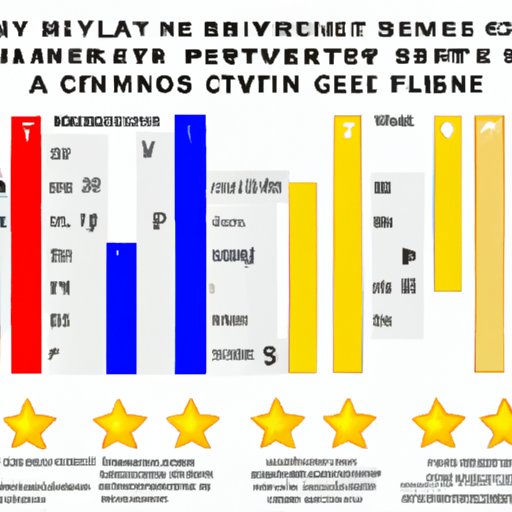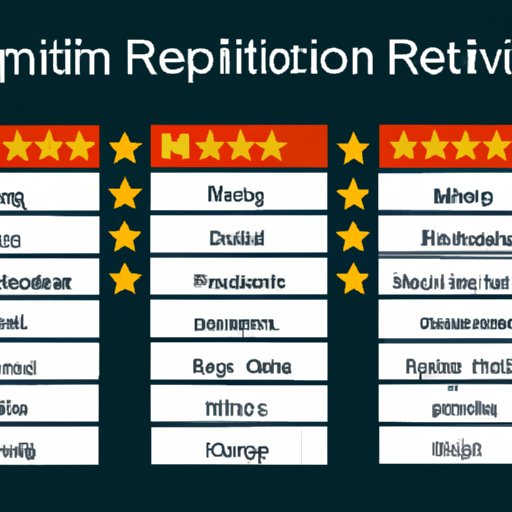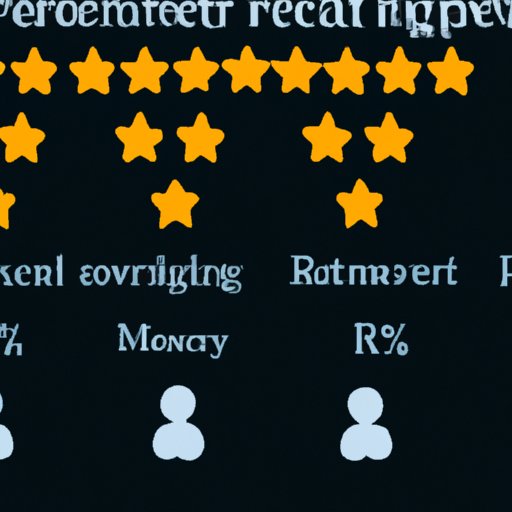Introduction
Movie ratings are an integral part of the film industry. These ratings can help parents decide which films are suitable for their children and can also provide insight into the content of a given movie. But what exactly are movie ratings? And how are they determined? This article will explore the various aspects of movie ratings, from how they are determined to their impact on viewers.

A Comprehensive Guide to Movie Ratings
Before delving into the details of movie ratings, it is important to understand the different types of ratings and how they are determined. There are five main categories of movie ratings: G, PG, PG-13, R, and NC-17. Additionally, some movies may be unrated, meaning that they have not been submitted to the Motion Picture Association of America (MPAA) or the Classification and Rating Administration (CARA) for review.

Deciphering the Different Types of Movie Ratings
The most common movie ratings are G, PG, PG-13, R, and NC-17. The G rating stands for “General Audiences,” which means that all ages are allowed to watch the film without any parental guidance. The PG rating stands for “Parental Guidance Suggested,” which means that some material may not be suitable for younger viewers and parental guidance is advised. The PG-13 rating stands for “Parents Strongly Cautioned,” which means that some material may not be suitable for viewers under 13 years of age and parental guidance is strongly advised. The R rating stands for “Restricted,” which means that the film contains material that may not be suitable for viewers under 17 years of age and parental accompaniment is required. Finally, the NC-17 rating stands for “No One 17 and Under Admitted,” which means that the film contains material that may be too explicit for viewers under 17 years of age and no one under 17 is allowed to watch the film.
Unrated movies have not been submitted to the MPAA or CARA for review and therefore do not have an official rating. However, these films may still contain explicit content, so parental discretion is advised.
Understanding How Movie Ratings Are Determined
Movie ratings are determined by the MPAA and CARA. The MPAA is a trade organization that represents the interests of the major film studios. The CARA is responsible for reviewing films submitted by the MPAA and assigning them a rating. Films are rated based on criteria such as language, violence, nudity, drug use, and sexual content.
In order to determine the appropriate rating for a film, the CARA reviews the film and assigns it either an initial rating or a provisional rating. An initial rating is the rating assigned to a film after the first review. A provisional rating is a rating that is subject to change after further review.
Exploring the Pros and Cons of Movie Ratings
Movie ratings can be beneficial in many ways. For example, they can help parents make informed decisions about what films their children should or should not watch. They can also provide insight into the content of a given movie.
However, there are also drawbacks to movie ratings. Some argue that movie ratings can be too restrictive and limit the creativity of filmmakers. Additionally, movie ratings can be subjective and may not always accurately reflect the content of a film.
What Do Movie Ratings Mean?
Movie ratings are intended to provide parents with guidance as to whether or not a particular film is suitable for their children. The ratings can also provide an indication of the age appropriateness of a given film and offer insight into the content of the movie.

The Impact of Movie Ratings on Audiences
Movie ratings can have a significant impact on viewers. For example, certain ratings may discourage young viewers from seeing certain films. Additionally, movie ratings can give parents a better understanding of what their children are watching.
Conclusion
Movie ratings are an important part of the film industry. They provide parents with guidance as to what films are suitable for their children and offer insight into the content of a given movie. Additionally, movie ratings can have a significant impact on viewers, both positively and negatively. In sum, movie ratings are an invaluable tool for helping parents make informed decisions about the films their children watch.
(Note: Is this article not meeting your expectations? Do you have knowledge or insights to share? Unlock new opportunities and expand your reach by joining our authors team. Click Registration to join us and share your expertise with our readers.)
